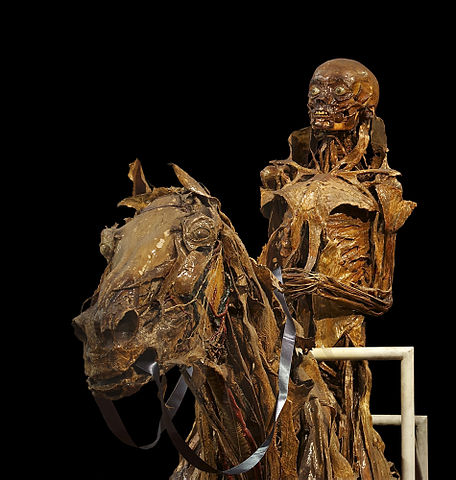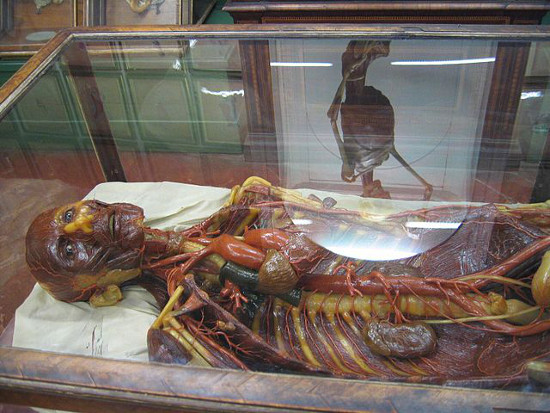
French anatomist Honoré Fragonard (1732-1799) blurred the line between science and art by arranging human and animal bodies in fanciful poses. By replacing the eyeballs with glass replicas and injecting a distorting resin into the facial blood vessels, he achieved some remarkably expressive effects — his Fetus Dancing the Jig is best left to the imagination.
Florence’s Museum of Zoology and Natural History preserves a collection of wax models that were used in teaching medicine in the 18th century (below). Modelers might refer to 200 corpses in preparing a single wax figure. “If we succeeded in reproducing in wax all the marvels of our animal machine,” wrote director Felice Fontana, “we would no longer need to conduct dissections, and students, physicians, surgeons and artists would be able to find their desired models in a permanent, odor-free and incorruptible state.” Goethe praised artificial anatomy as “a worthy surrogate that, ideally, substitutes reality by giving it a hand.”

(From Roberta Panzanelli, ed., Ephemeral Bodies, 2008.)
